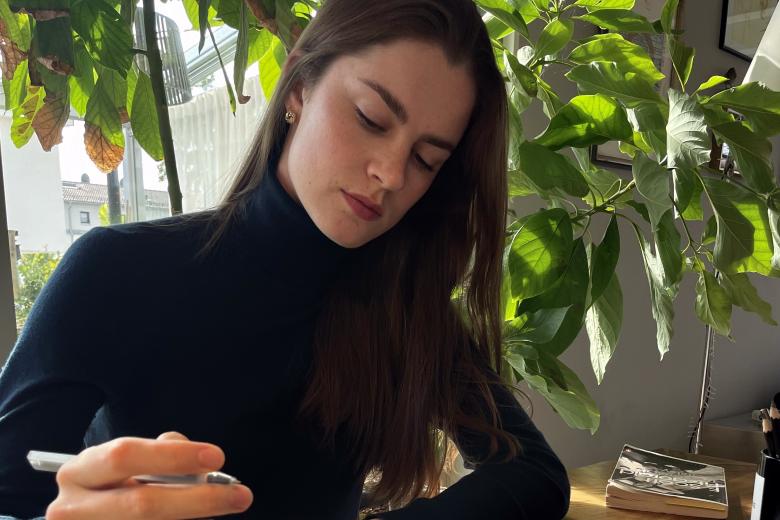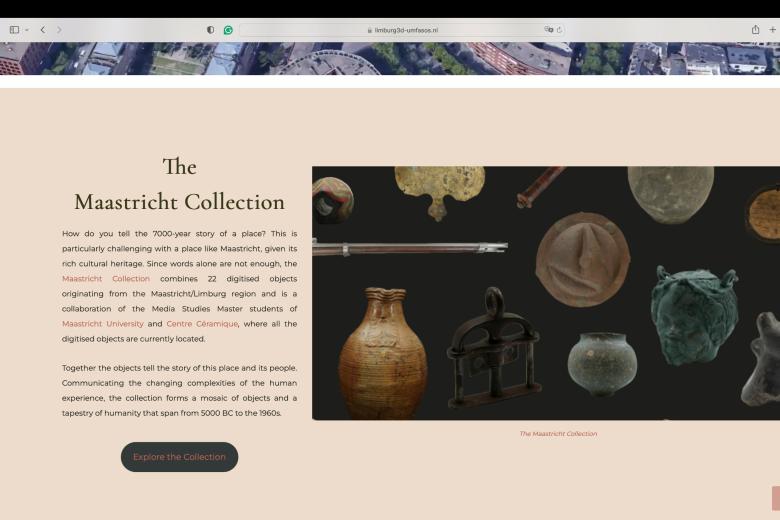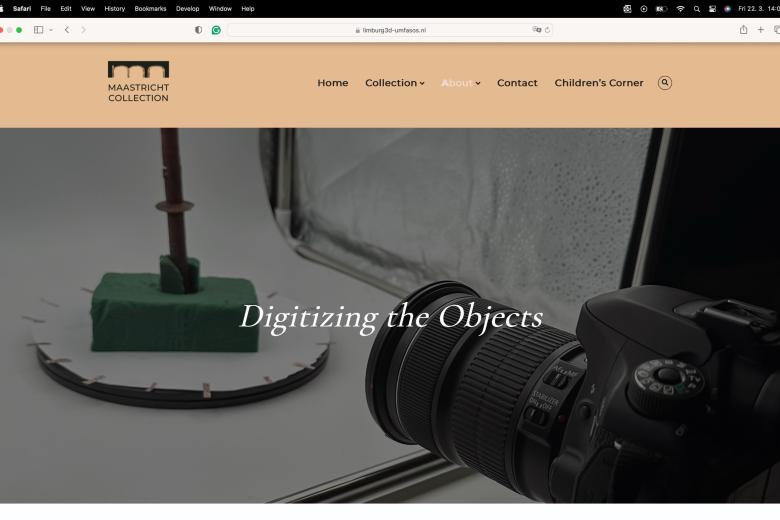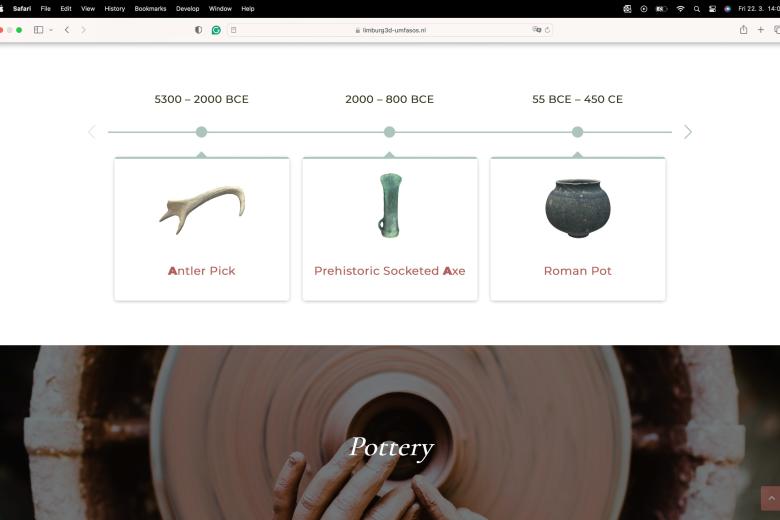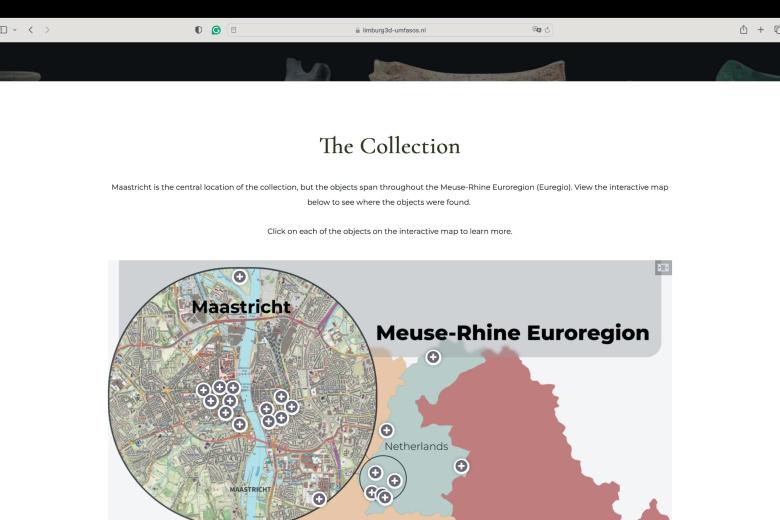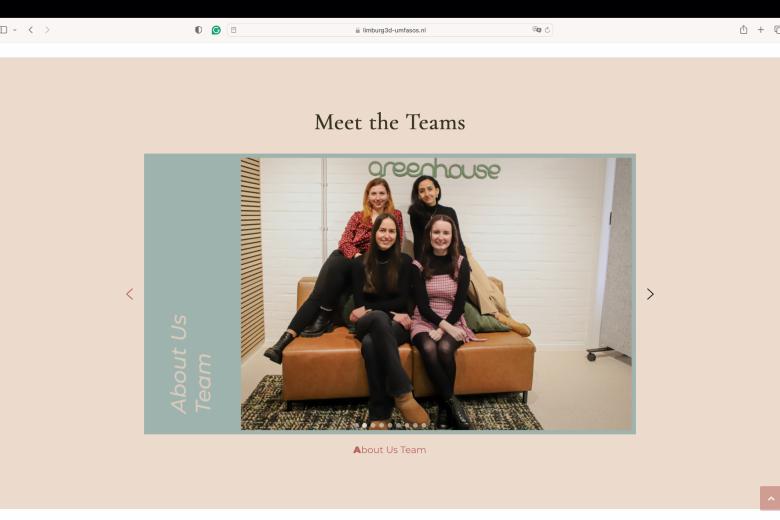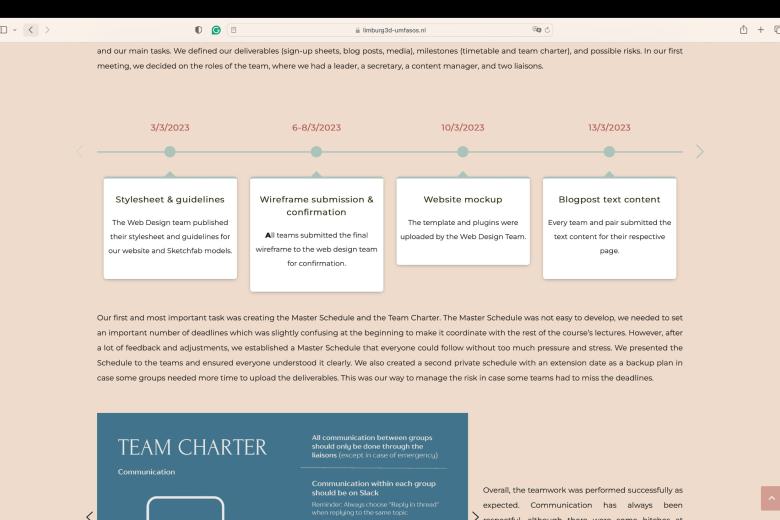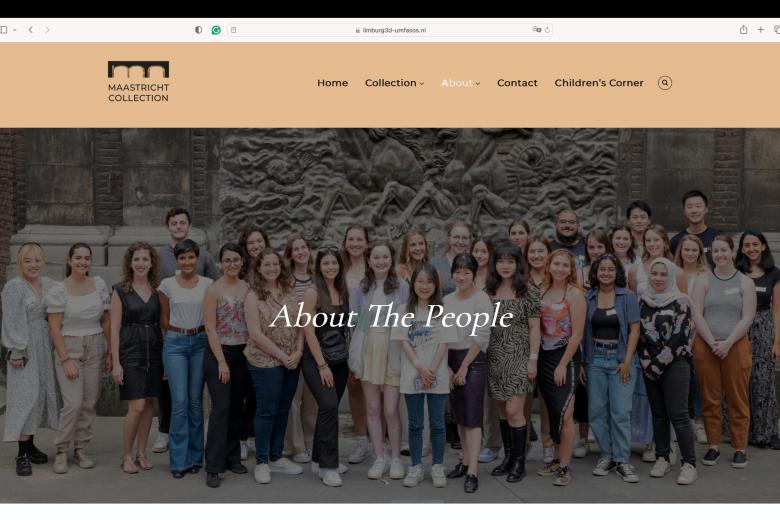Students digitise Maastricht's history with interactive museum collection
During her Master's in Digital Cultures, Nada Naguib participated in a unique collaborative digital museum project in the halls of Centre Céramique, Maastricht's city library and centre for art, culture and education. Initially a mandatory course requirement, the Maastricht Collection project evolved from a challenging task into a valuable experience in client work and teamwork while engaging with Maastricht's local history.
Digitising history at Centre Céramique
"This project aimed to involve international students in making Maastricht's history more accessible and increasing the cultural engagement of Maastricht's residents with their city," Nada explains.
The project was two-fold. First, students selected a historical artefact from the Maastricht Museum collection and were tasked with researching their chosen object, drafting a detailed description and creating a 3D model. They captured 360-degree images of the artefact, ensuring thorough coverage from all angles and using computer software to prepare the 3D model. Then, students collaboratively developed web pages for this collection, with each team assigned to work on a specific page, such as a Theme page or the About Us page. "The process itself was quite complex but also a lot of fun," Nada reflects.
The Maastricht Collection website, created by UM students
Podcast
As part of the project, Nada interviewed Sjoerd Arts, the collection manager at Centre Céramique, and transformed their conversation into an engaging podcast. For Nada, the interview with Sjoerd presented a unique opportunity to understand the project's origins and objective to create a digitised platform showcasing the city's history, accessible to everyone.
"The interview was definitely the most memorable experience for me," she recalls. "I felt like going back to my Journalism Bachelor's days, where I learned about interviewing and podcasting, but this time, I had the chance to adapt these skills in a different context."
Lost in translation
Throughout the project, students encountered several challenges, including time constraints, logistics issues and all the struggles connected to teamwork. "The assignment definitely required a lot of coordination and flexibility," Nada says. "Every student works differently; some focus more on visuals, and others prefer to read and digest information at their own pace," she explains.
Language barriers are another challenge that international students encounter during such projects and beyond. "Many of us didn't speak Dutch, so it was a lot of back-and-forth, translating and piecing information together," Nada says. "A lot of students come to Maastricht for a year or three; they live in the city and immerse themselves in the student experience, but they miss out on local history."
One of the advantages of Centre Céramique's new digital collection is that it contributes to breaking this barrier and allows everyone to access the region's history online in English from the comfort of their homes.
Juggling academic assignments and client work
In this project, students developed and practised numerous academic skills, including conducting research, wireframing, 3D modelling, and teamwork. At the same time, they improved competencies such as time management, adapting to various situations, and working for a client. "With Centre Céramique as our client, we tried to create something that aligned with their purpose, style, and narrative," Nada explains. However, assuming this dual role of being a student and working for a client meant reconciling conflicting requirements and expectations."Balancing everyone's vision and expectations can be challenging, but it was a valuable learning experience," she says.
Despite the challenges, Nada speaks of her experience very fondly. "It was certainly not a seamless project; there were a lot of struggles and obstacles throughout the process, but we learned a lot from each other, and it was very rewarding to see the result at the end," Nada reflects. She felt a sense of pride and achievement when it was completed: "I was like, wow, we created that in a month."
Connecting deeper with Maastricht's history
Projects like this go beyond academic achievement, offering opportunities for cultural engagement and integration. For international students in Maastricht, the project provided a tangible connection to the city's history, an aspect often overshadowed by the everyday challenges and experiences of studying abroad. "As someone from Egypt, I have always been interested in history, and this experience enabled me to appreciate my current surroundings and connect deeper with the city of Maastricht," Nada reflects.
At the end of the project, Nada and her fellow students were left with cherished memories and a sense of accomplishment. She smiles: "I heard that Centre Céramique was very pleased with our efforts, too!"
By Lia Krizova, EDLAB Student Assistant, Bachelor Student FASoS
This article is a publication of edUMinded, the Maastricht University online magazine on Teaching & Learning.
Interested in more Teaching & Learning insights?
Also read
-
UM builds open education and digital literacy into BKO/UTQ
Maastricht University is taking a practical step to support early-career teachers: open education and digital literacy will be built more firmly into the BKO/UTQ.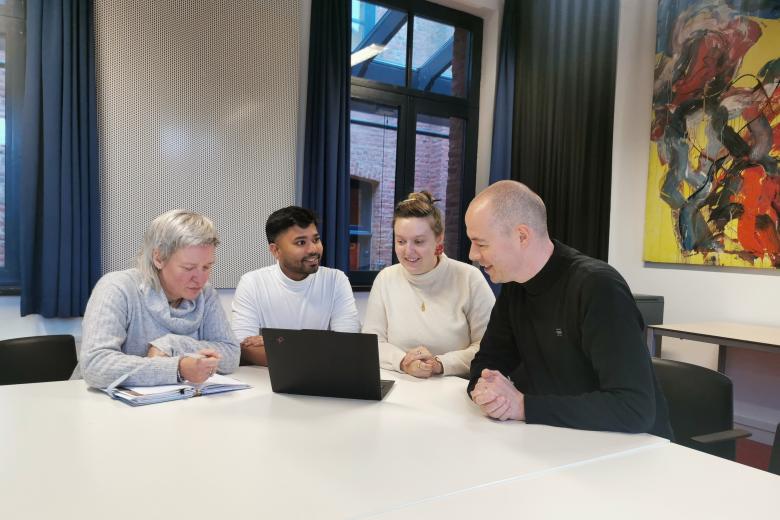
-
Celebrating 221 UM teachers who earned their University Teaching Qualification!
Educators from FHML (114), SBE (22), FSE (15), Law (33), FASoS (23), and FPN (14) have officially joined the ranks of UTQ-certified teachers.
-
If a machine can write a flawless essay, what’s left for the writer?
UCM graduate Robin van Wasen traces how writing has shaped her learning, identity, and voice, and asks whether AI, despite its fluency, can ever replace the intent, authenticity, and connection that define human writing.